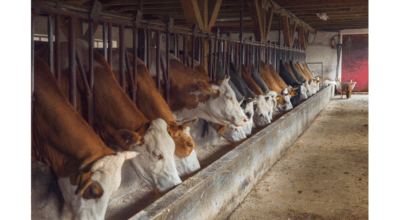Andrea troubling area farmers
Published 10:28 am Wednesday, June 12, 2013
COURTLAND—The after-effects of Tropical Storm Andrea have not only been raising the Blackwater River, albeit a few inches so far, but also increasing some concerns for farming in Western Tidewater.
“We’ve been very fortunate on our farm, which is three miles northeast of Zuni,” said Cecil Byrum. “We’ve not had the heavy rains like some, but there’s been an abundance.”
He also said the ground is saturated enough at his place that fieldwork cannot be completed, and road closures in some places have also been an obstacle.
Byrum hopes to harvest the wheat soon because too much rain could ruin its quality.
“We need to get it harvested and in the bins and then plant the soybeans,” he said, adding that there’s been a five- to seven-day loss in the field. That’s time that could have been spent in spraying and other prep work, added Byrum.
He predicts a potential loss of a bushel a day of soybeans if the weather continues to be uncooperative.
“Lots of standing water, ponding and leaching of fertilizer comes with the territory,” he said. “Not a good scenario.”
“The rainfall has once again been quite variable,” said Chris Drake, extension agent for Southampton County. “Speaking to the rain from Andrea, the lowest amount reported was about 1.0 inch to as much as 6.5 inches in some isolated locales.”
Although the bands were widespread, he added, some were considerably heavier than others in the county.
In the Sands and Statesville communities southeast of Newsoms, Drake said, a storm cell on Sunday night dumped as much as 4.5 inches in about 40 minutes, and that’s almost unheard of. He added there are reports of winds 50 mph and higher and even hail on Sands Road.
“This is an area that has been hit hard by storms for the last four weeks and cannot seem to catch a break,” Drake said. “Monday, the storms dropped rain on nearly every community in Southampton County with rainfall amounts totaling from 0.5 to 2.5 inches, so we have definitely had our “fair share” of rainfall events.
The agent is certain that some soybeans will be replanted, and this could be done successfully until early July.
“But cotton is what it is at this point, and in many cases, that is a poor stand with reduced yield potential,” said Drake. “Heavy rains will leach vital nitrogen and sulfur out of the root zone, and require some extra fertilizer management beyond the normal programs.”
He noted that many fields will have cotton at different growth stages, and that will be a challenge where management is concerned.
“Peanuts are slow to grow also due to poorly aerated soils and heavy thrips damage in some fields because insecticide sprays could not be made on time,” Drake also said.
He elaborated further that the wheat harvest is going to be later than in 2012 because of later planting dates, the slow drydown and wet fields. There’s also a high occurrence of head scab, which is a fungal disease that affects the wheat heads and grain. This comes from moist and humid conditions that favor the disease.
“Just in general, we have seen far too much rain to achieve successful early season growth of all crops,” said Drake.





